SUMMARY
This is AI generated summarization, which may have errors. For context, always refer to the full article.
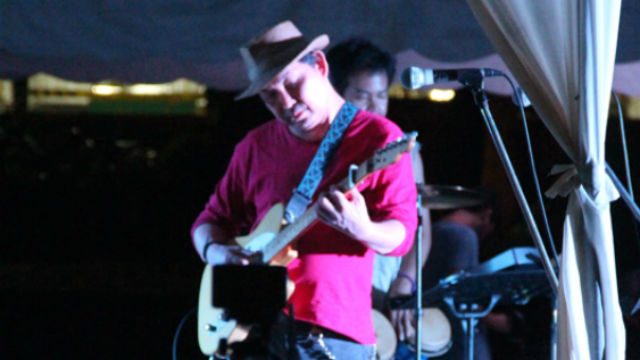
MANILA, Philippines – On the evening of January 30, artists performed at the Bantayog ng mga Bayani, the memorial honoring the martyrs who died in the struggle against the Marcos dictatorship, from the imposition of martial rule in 1972 to the ouster of Marcos by peaceful revolt in 1986, for the #NeverForget Concert.
Performers included musicians Chickoy Pura, Gary Granada, and Lolita Carbon, Bayang Barrios, and Cooky Chua of the supergroup Tres Marias – all members of the League of Authors of Public Interest Songs (LAPIS).
The concert was timely in more ways than one. The First Quarter Storm (FQS) began in January 1970 – the period of civil unrest against President Ferdinand Marcos’ second term in office that led to the imposition of Martial Law.
The #NeverForget Concert also resonated because of the current resurgence of the Marcos political dynasty and their cronies in the upcoming elections, the revisionist and false history peddled among the millennial generation by Marcos apologists and loyalists, and the populist strongman image adopted by certain presidential candidates that mirror Marcos’ own dictatorial and murderous ways.
Promoted as “part of Bantayog’s advocacy of raising awareness and educating the youth through music about the Martial Law period,” the concert was transformed into a reunion of survivors and martyrs by virtue of its performers, its attendees, and the venue. Those onstage, those in the audience, and those honored by the memorial were all brought together by a night of music that stoked fiery embers within their hearts.
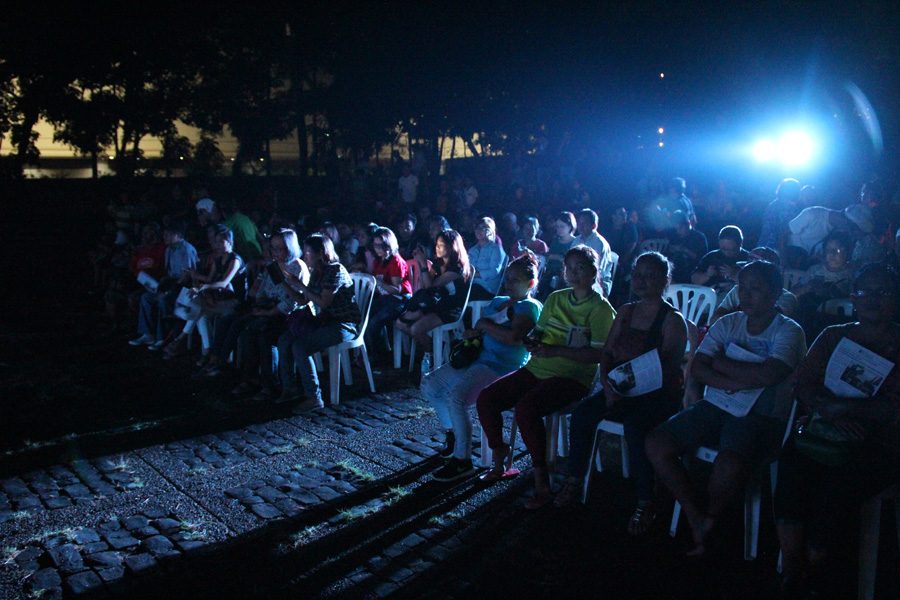
Onstage were legendary rockstars esteemed by both music lovers for immortal songs and by activists for their unwavering support for people’s causes. Chickoy Pura is the vocalist of the seminal punk rock band The Jerks.
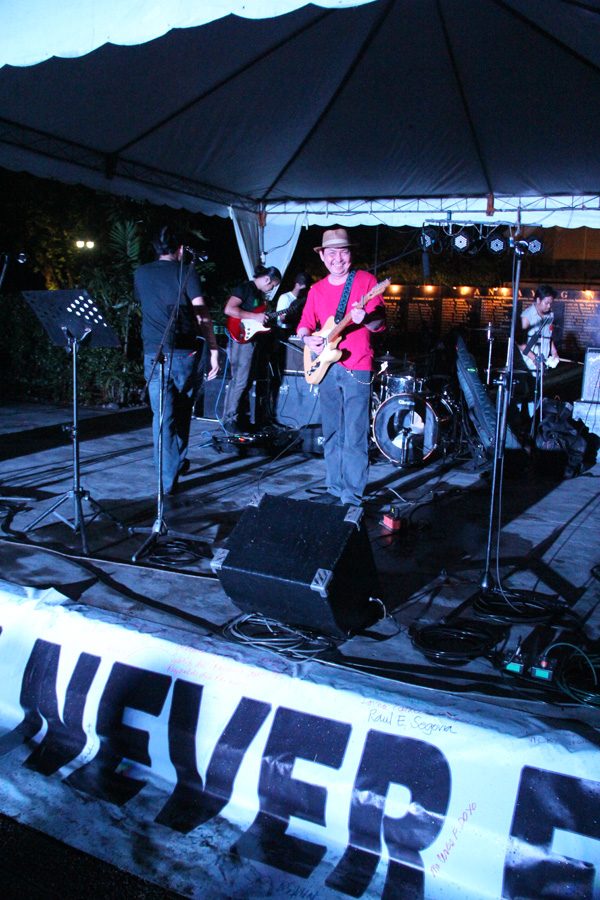
Gary Granada is one of the most prolific Filipino songwriters in history, having published dozens of his own albums as well having authored some of the most well-loved television show theme songs. Lolita Carbon is the unmistakable female voice of the legendary folk group Asin. Bayang Barrios is the shining voice in Joey Ayala’s neo-ethnic band Ang Bagong Lumad. Cooky Chua is the iconic vocalist of the rock band Color It Red.
Comrades in spirit
As acclaimed as the singers were onstage, they were in the company of no less heroes and martyrs. Many of the veteran activists and survivors in attendance took the time to stroll the grounds of the Bantayog ng mga Bayani, memorials to their fallen comrades and loved ones.
On the “Wall of Remembrance,” a long black granite wall, the names of martyrs are inscribed – 268 victims the Marcos regime. The monument has room for more names those yet to be discovered. As recent as December 2015, 15 more victims of the Marcos regime were added. An elderly concertgoer took the time to bring a child to the wall, to show the name of a loved one.
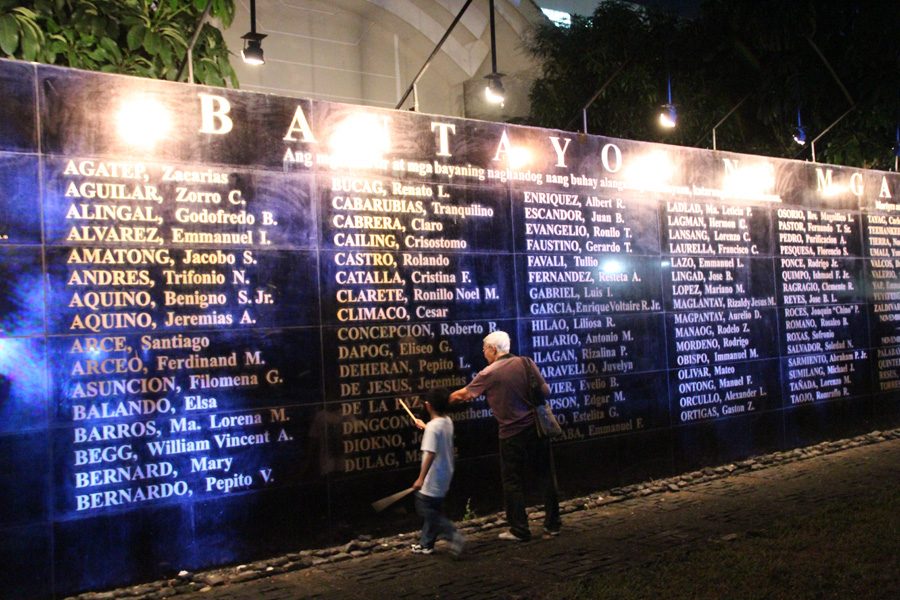
The “Inang Bayan (Mother Philippines)” sculpture of Eduardo Castrillo greeted every visitor to the concert, giving pause to those who entered the memorial grounds as they gazed upon the towering 14-meter high bronze sculpture.
The latest and arguably most striking addition to the memorial grounds are Toym Imao’s 43 ensemble sculptures entitled “Desaparecidos: Memorializing Absence.” The 43 sculptures hold hollow frames to their chest to symbolize the emptiness left by missing loved ones, victims of enforced disappearances during the Marcos dictatorship.
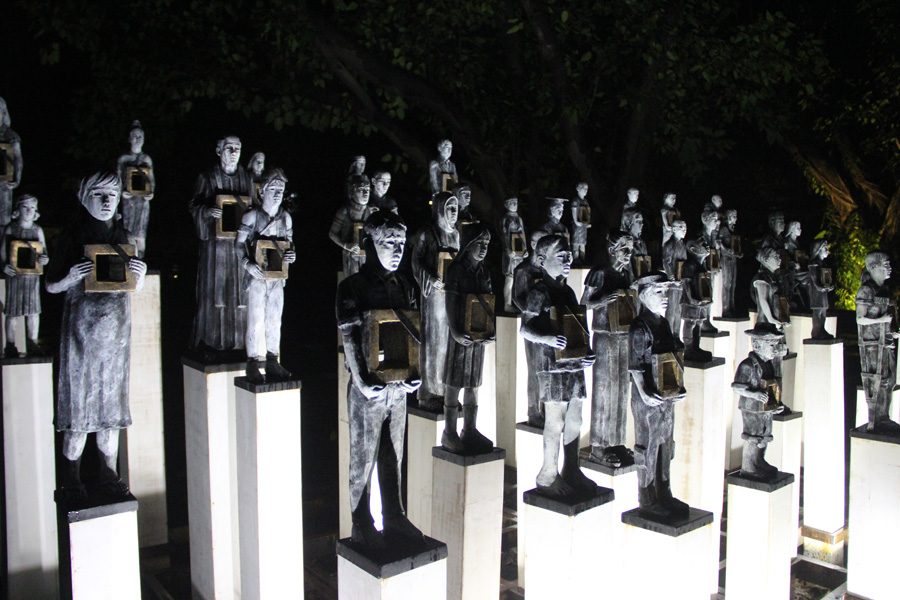
Military historian Alfred McCoy cited 3,257 extrajudicial killings, some 35,000 cases of torture, and some 70,000 incarcerations perpetrated by the Marcos regime. Human rights group Karapatan documented 759 involuntarily disappearances. The Marcos dictatorship also mired a generation of Filipinos in poverty, having stolen an estimated $5 billion to $10 billion according to the United Nation’s Stolen Asset Recovery Initiative, and entrenched a system of corruption throughout government.
Among the many elderly veteran activists and their loved ones in attendance were Bayan Muna party list Representative Neri Colmenares, a human rights lawyer, and senatorial candidate. In a fitting gesture, he quietly allowed the singers onstage to keep the spotlight on the heroes of the anti-dictatorship struggle.
Songwriter speaks
The return of the pre-martial law oligarchy after Marcos and his cronies were deposed, as well as the unsolved problems of corruption, poverty, and brutality, left many cynical, open to reinterpret the fight between democracy and dictatorship as nothing more than a power struggle between the Marcos and Aquino political dynasties.
The #NeverForget Concert at the Bantayog ng mga Bayani was a reminder that it was the people, not any political dynasty, that toppled the dictator, and that the people’s struggle for justice, equity, and freedom continues.
LAPIS board of trustees leader Chickoy Pura admonishes millennials. He advises, “Ang magagawa na nila is to go back to history. Tingnan nila kung ano ang mga nangyari noong time ni Marcos, time ng dictatorship. Actually, yung mga conditions ngayon, kung ano yung conditions noon. Kasi after Marcos, we have an abundance of little tyrants na actually yung model nila is yung dictator.
(What they can do is to go back to history. They should look at what happened during the time of Marcos, the time of the dictatorship. Actually, the conditions we have today are the same conditions we had back then. Because after Marcos, we have an abundance of little tyrants who model themselves after the dictator.)” – Rappler.com
Writer, graphic designer, and business owner Rome Jorge is passionate about the arts. Formerly the Editor-in-Chief of asianTraveler Magazine, Lifestyle Editor of The Manila Times, and cover story writer for MEGA and Lifestyle Asia Magazines, RomeJorge has also covered terror attacks, military mutinies, and mass demonstrations as well as reproductive health, gender equality, climate change, HIV/AIDS and other important issues. He is also the proprietor of Strawberry Jams Music Studio.
Add a comment
How does this make you feel?
There are no comments yet. Add your comment to start the conversation.